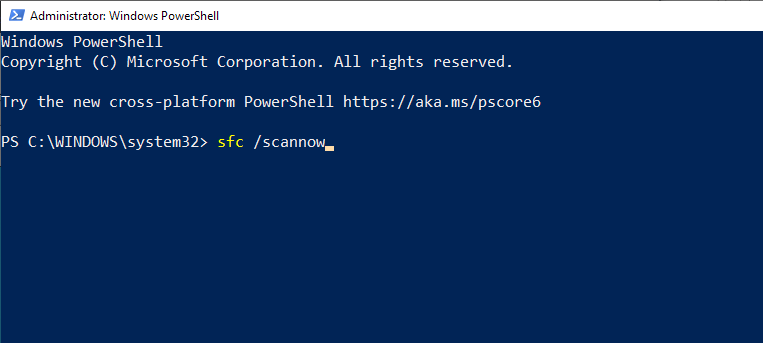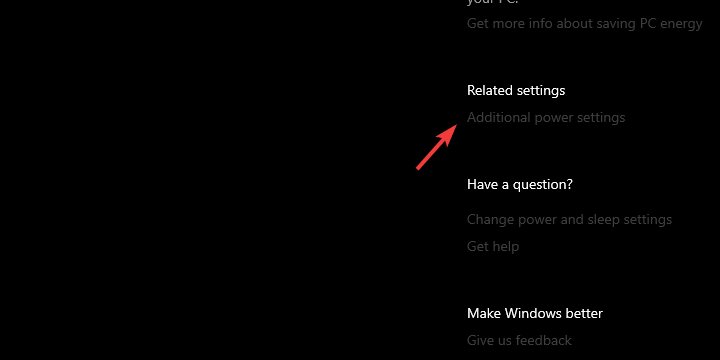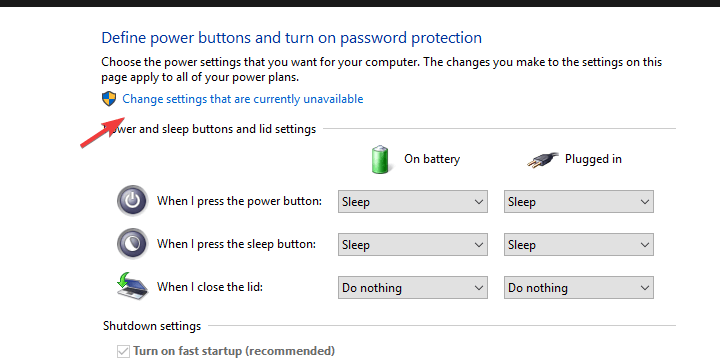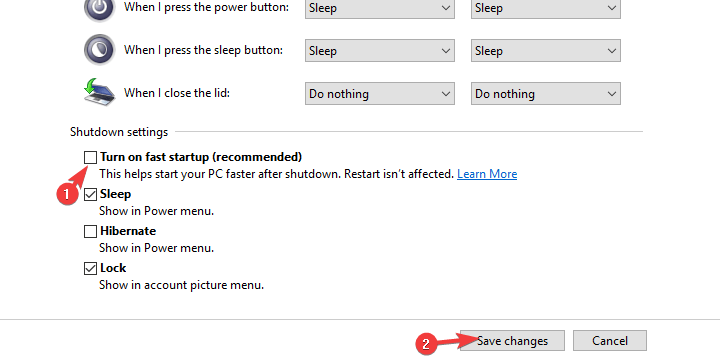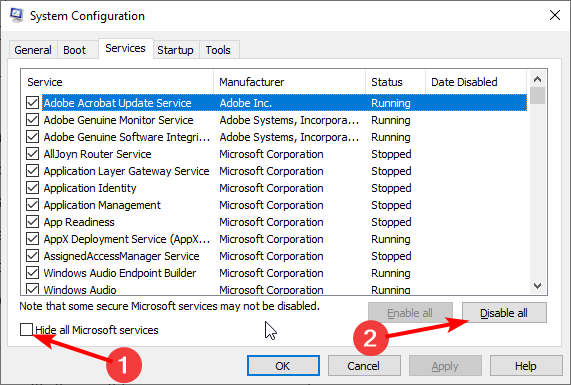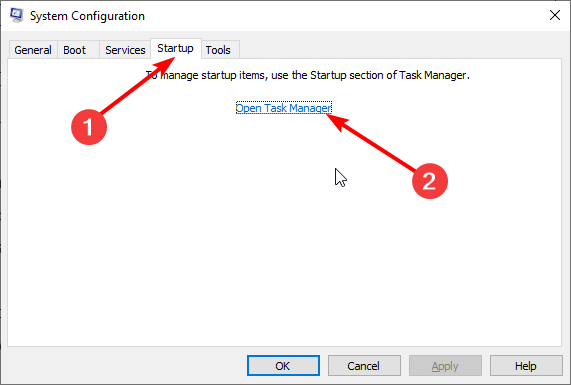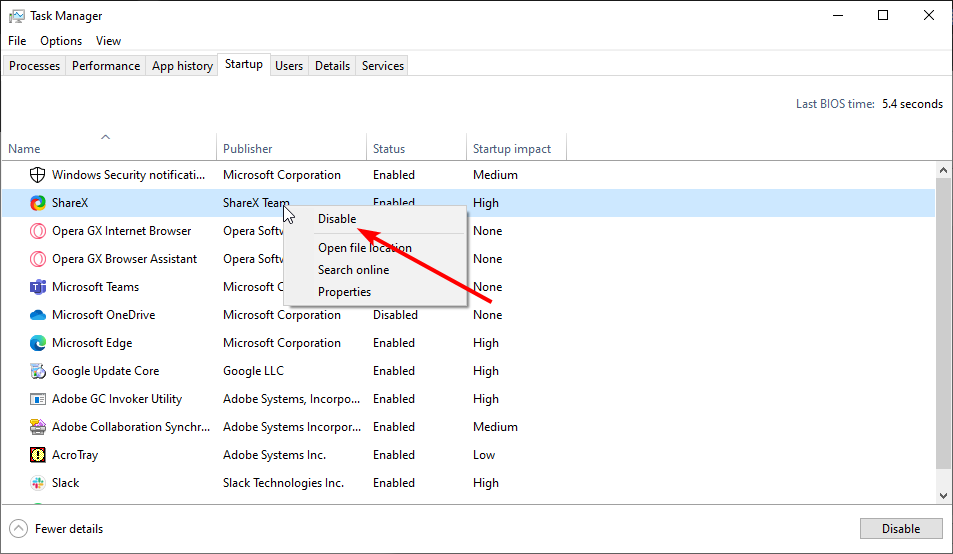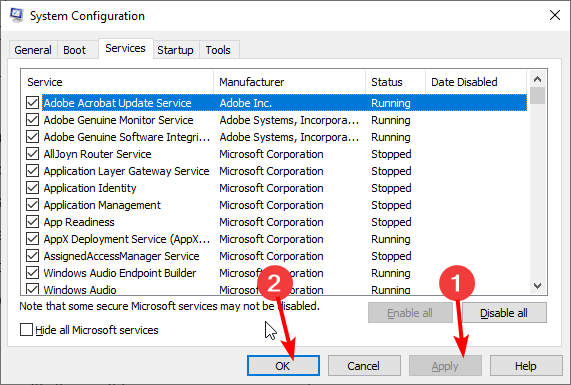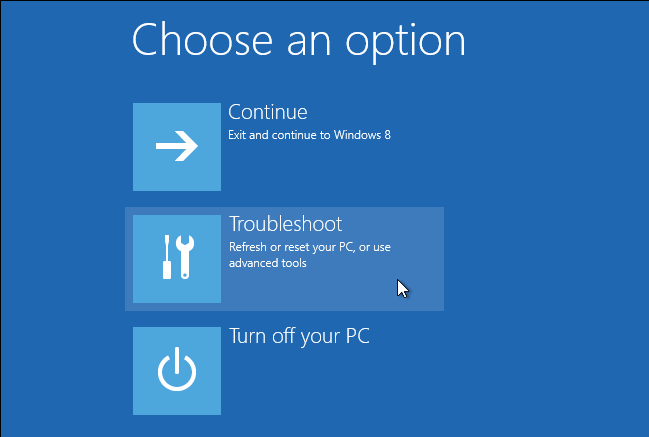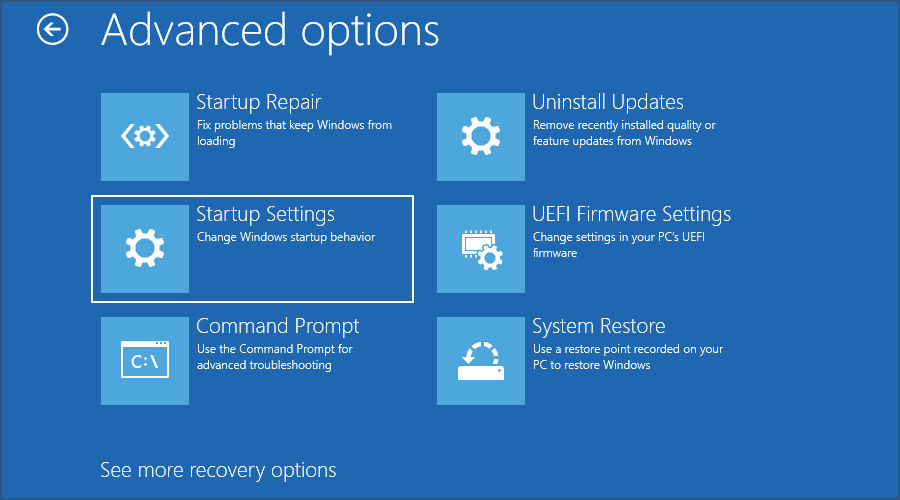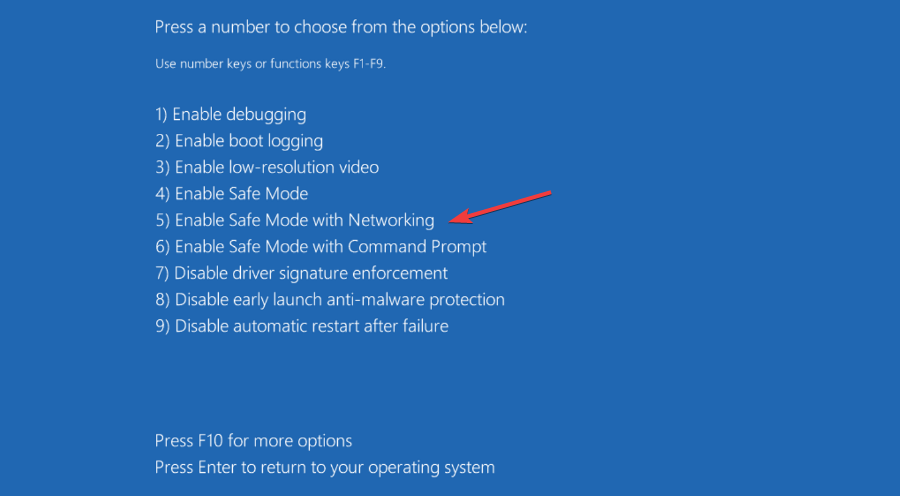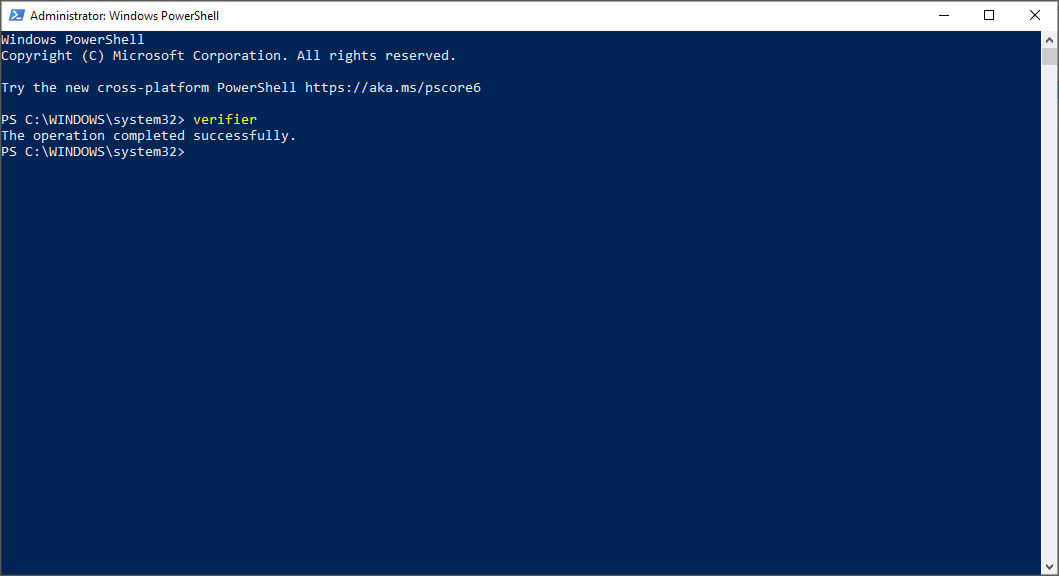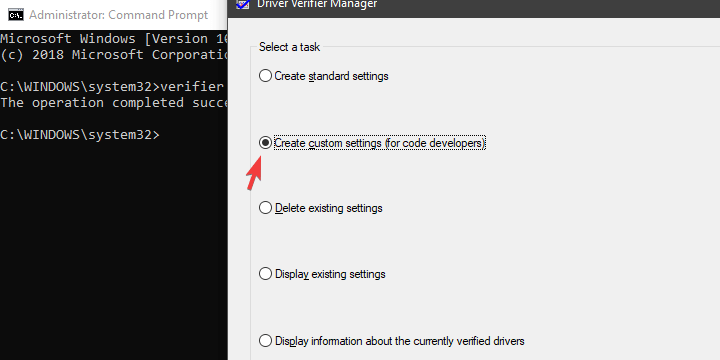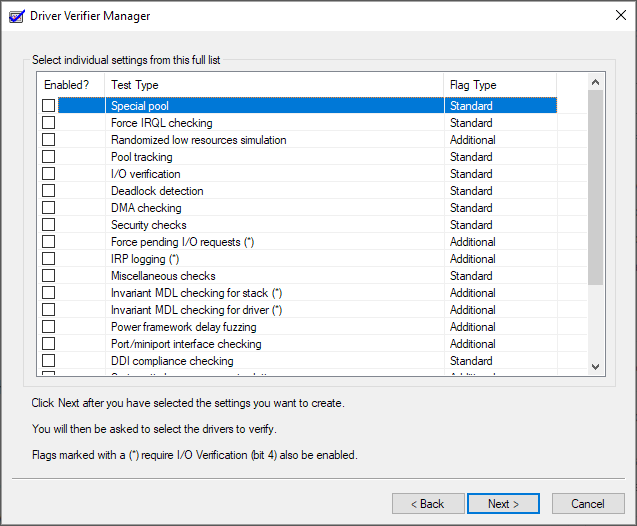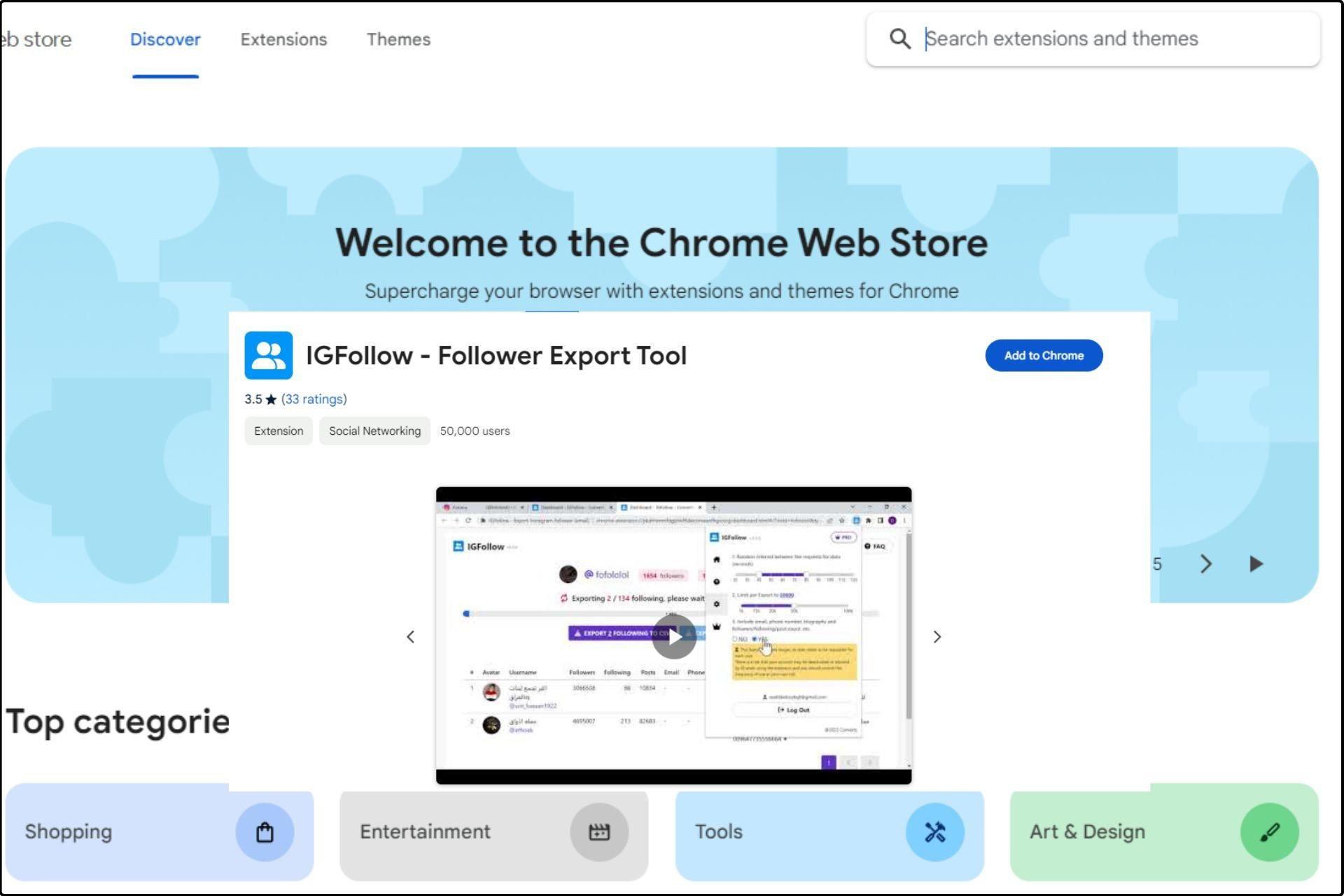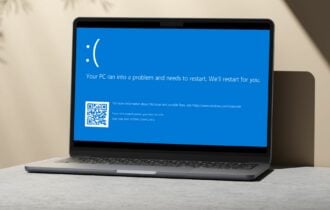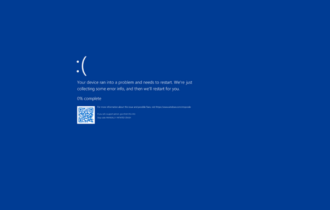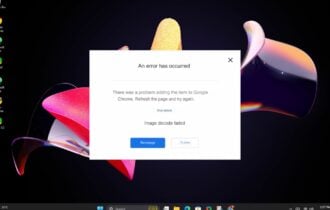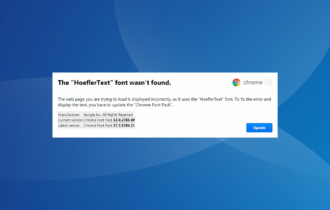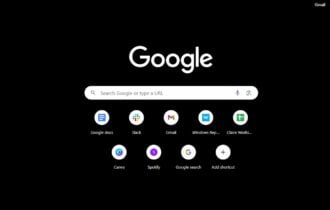Google Chrome Causing Blue Screen/BSOD: Can It Be & How to Fix
Using a dedicated BSOD troubleshooter will fix this issue in no time
8 min. read
Updated on
Read our disclosure page to find out how can you help Windows Report sustain the editorial team Read more
Key notes
- If it occurs while you’re working in Chrome, a BSoD might be caused by some browser settings.
- No matter the error, you shouldn’t have trouble fixing it using a BSoD troubleshooting tool.
- Logging into Safe mode with Networking on Windows 10 will help you test if the issue is Chrome or your system.

We can agree that a Blue Screen of Death is something no one wants to see on their Windows PC. They appear rarely, and some users even reported Chrome BSoD.
Many users reported BSoD caused by Chrome while browsing the internet or watching YouTube videos. Apparently, the system just crashed on them.
Now, we’re afraid that Chrome hardly causes this matter on its own. The browser is probably only a trigger. If you’re suffering from this issue, try using BSoD fixer software.
Nonetheless, we have many steps for you to try and, hopefully, address the BSoDs for good.
Can Chrome cause blue screen?
There are multiple causes for BSoD, including damaged files, system corruption, driver issues, etc. In the worst-case scenario, the BSoD can be caused by failing hardware, mainly your RAM.
Some Google Chrome settings like Hardware acceleration and other issues with the browser can also lead to a blue screen on your PC.
Sometimes specific applications can cause these issues, and today we’re going to look into the Memory management BSoD error in Google Chrome. Aside from this issue, the following variations were also reported by users:
- Chrome causing BSoD Windows 10
- Google Chrome BSOD memory management
- BSOD when browsing the internet
- Chrome youtube BSOD – BSOD while watching youtube
- Chrome video BSOD
- Blue screen when opening Chrome
- Chrome keeps crashing Windows 11
- Google Chrome blue screen Windows 7
Can a website cause a blue screen?
Technically, no, a website can’t cause a BSoD error to appear. These errors are caused by driver issues, missing system files, or hardware problems.
A random website or URL may try to use your hardware, which will cause the BSoD issue, but that can happen with any other tasks or application on your PC.
In this article, we’re focused on Chrome BSoD and the reasons behind it.
Quick Tip:
Use a lighter browser that uses fewer PC resources. Chrome is known for using up a lot of memory which can cause all sorts of problems. A browser with similar features with a minor impact on your PC is Opera One.
This browser is known for its meager error rate and up-to-standard features. It includes antitracking, VPN, dedicated social media and messengers support, and access to many verified extensions.

Opera One
Remove any errors your browser triggers with dedicated features for secure and fast web surfing!How do I fix the blue screen on Google Chrome?
- Disable Hardware Acceleration
- Try a BSoD troubleshooter
- Run SFC and DISM
- Disable Fast Boot and start the PC in a clean boot regime
- Boot into Safe mode
- Update Windows and BIOS
- Run Driver Verifier and reinstall failing drivers
- Reinstall Windows 10
1. Disable Hardware Acceleration
If you’re getting YouTube BSoD in Chrome, it’s possible that this setting is causing it, so be sure to disable it.
- Open Chrome.
2. Click on the 3-dot menu and open Settings.
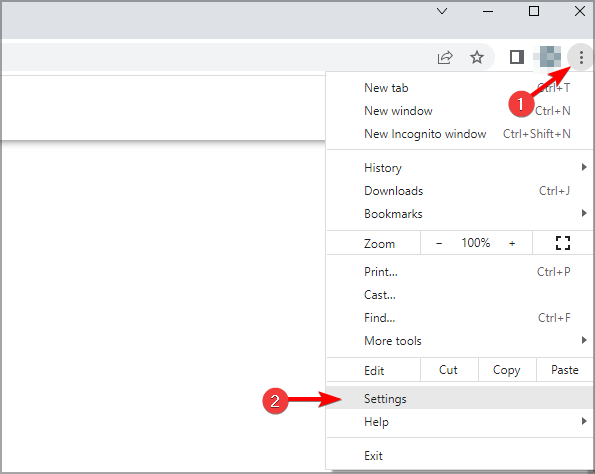
3. In the left pane, navigate to System.
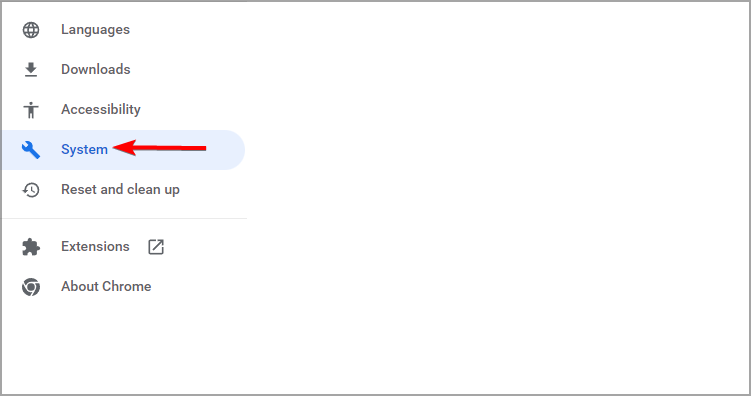
4. Toggle off the Use hardware acceleration when available setting.
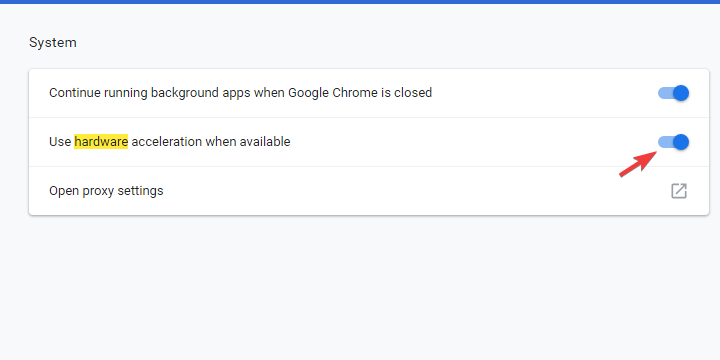
5. Restart your browser.
2. Try a BSoD troubleshooter
A dedicated blue screen fixer will look into all possible bugs that might have led to this issue, so it might be your best shot to get rid of it and prevent such events in the future.
3. Run SFC and DISM
- Press Windows key + X and select Windows PowerShell (Admin).
- In the command line, run the following command:
sfc/scannow - After its done, type the following command and press Enter after each:
DISM /online /Cleanup-Image / ScanHealthDISM /Online /Cleanup-Image /RestoreHealth - When the procedure ends, restart your PC.
This issue probably goes beyond Chrome. We’re possibly looking at the Windows system corruption of some kind. And the best way to resolve it is with SFC and DISM combined.
Those two are the built-in system utilities run through the elevated command prompt. Once you run them, they’ll scan for system errors and fix them by replacing corrupted or incomplete files.
If you’re getting a blue screen when opening the browser, your system files may be damaged, so be sure to repair them using these methods.
After repairing the files, the Chrome BSoD should be gone.
4. Disable Fast Boot and start the PC in a clean boot regime
- In the Windows Search bar, type Power and open Power & sleep settings.
- Click on the Additional power settings.
- Click on the Choose what the power buttons do from the left pane.
- Choose Change settings that are currently unavailable.
- Disable Fast Startup and confirm changes.
- Now, in the Windows Search bar, type msconfig and open System Configuration.
- Under the Services tab, check the Hide all Microsoft services box.
- Click Disable all to disable all active third-party services.
- Select the Startup tab at the top and click Open Task Manager.
- Right-click all the startup programs and select Disable.
- Finally, go back to the System Configuration window, click Apply, followed by OK.
- Restart your PC.
A clean boot should eliminate the possible negative impact of third-party applications on your system stability and help you if you’re getting a BSOD when browsing the internet.
5. Boot into Safe mode
- When the Windows logo appears during the startup, press and holds the Power button until the PC shuts down.
- Power on the PC and repeat the procedure three times. The fourth time you start the PC, the Advanced recovery menu should appear.
- Choose Troubleshoot.
- Select Advanced Options and then Startup settings.
- Click Restart.
- Choose Safe mode with Networking from the list.
- Run Chrome and look for improvements.
If the Chrome BSoD disappears, we strongly suggest following instructions from the next step on this list. If it’s still present, move to the next step.
6. Update Windows and BIOS
Now we’re reaching the most probable reason for the BSOD. And those are drivers. The simplest way to address this is to allow Windows Update to install all missing drivers.
In addition, we’ll need you to check on the BIOS/UEFI version you’re running and apply updates if necessary. You can find everything you need to know about it in our BIOS flashing guide.
We suggest using a dedicated driver updater in Outbyte Driver Updater. This will make the process fast, and the update will be done automatically.
7. Run Driver Verifier and reinstall failing drivers
- Make sure to create a Restore Point.
- Right-click on the Start and open Windows PowerShell(Admin) from the Power User menu.
- In the command line, type verifier and press Enter.
- The windows will pop up.
- Choose to Create custom settings (for code developers) and click Next.
- Select I/O verification, Force pending I/O requests, and IRP logging from the list and click Next.
- On the next screen, click Select driver names from a list.
- Check all non-Microsoft drivers and click Finish.
- Reboot your PC and let the Driver Verifier work in the background for no more than 48 hours. 24 hours should do. You might experience slight performance drops as the tool will be a burden on drivers for testing purposes.
- After 24 hours or so, open Driver Verifier again and choose to Delete existing settings, and click Finish. Restart your PC.
Driver Verifier, the built-in tool which detects illegal actions made by corrupt drivers. That way, you’ll find out what exact driver is causing BSOD, and you can install a proper iteration timely.
8. Reinstall Windows 10
Finally, if none of the previous steps worked for you, we suggest reinstalling Windows 10 cleanly. Of course, this time, we recommend relying on OEM-provided drivers instead of their generic versions provided by Windows Update.
If you’re unsure how to install Windows 10, we’ve got a complete guide on how to reinstall Windows 10.
How can I fix Chrome BSoD on Windows 11?
The Chrome BSoD on Windows 11 issue is usually caused by problems with your PC. Also, it can be down to some settings on your browser, especially the hardware acceleration feature.
You can fix this quickly by disabling the feature on Chrome. Lastly, you can run the SFC and DISM scan on Windows Terminal as admin. We have explained these fixes in detail in this guide.
Do blue screens damage your computer?
BSoD won’t damage your PC, but constant restarting will disrupt your workflow and prevent you from using your PC correctly.
If a hardware malfunction causes the issue, the problem will get more constant, and your PC will be even more unstable. So, it’s advised to replace this component before it completely fails.
With that said, we can wrap it up. These are just a few solutions you can try if you’re getting Chrome BSoD on your PC.
This isn’t the only problem that users encounter, and if you have Chrome freezing on your PC, you should check our dedicated guide to see how to fix it.
What solution did you use to fix this problem? Let us know in the comments section below.


